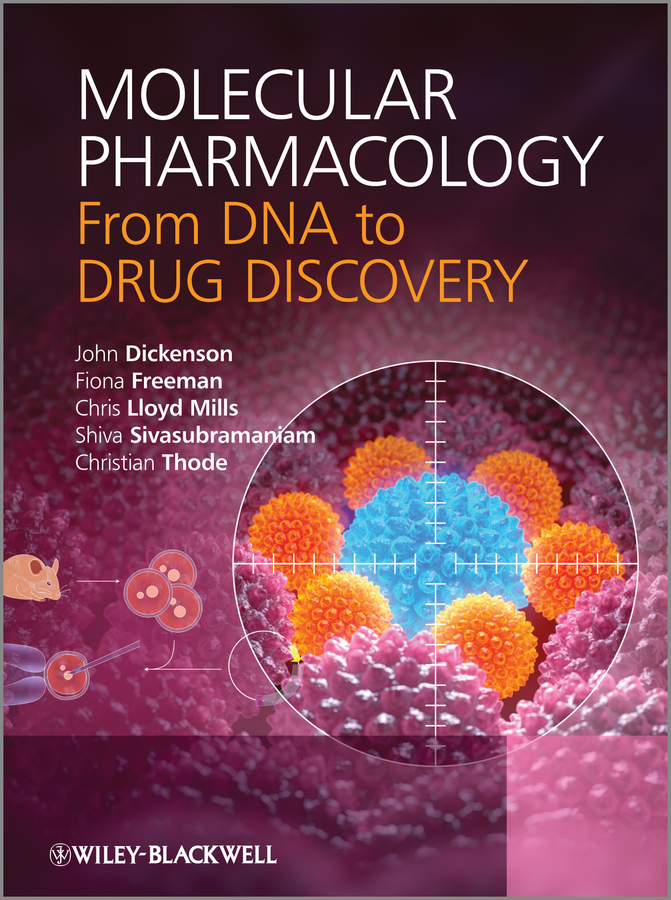Электронная книга: John Dickenson «Molecular Pharmacology. From DNA to Drug Discovery»

|
This textbook provides a fresh, comprehensive and accessible introduction to the rapidly expanding field of molecular pharmacology. Adopting a drug target-based, rather than the traditional organ/system based, approach this innovative guide reflects the current advances and research trend towards molecular based drug design, derived from a detailed understanding of chemical responses in the body. Drugs are then tailored to fit a treatment profile, rather than the traditional method of‘trial and error’ drug discovery which focuses on testing chemicals on animals or cell cultures and matching their effects to treatments. Providing an invaluable resource for advanced under-graduate and MSc/PhD students, new researchers to the field and practitioners for continuing professionaldevelopment, Molecular Pharmacology explores; recent advances and developments in the four major human drug target families (G-protein coupled receptors, ion channels, nuclear receptors and transporters), cloning of drug targets, transgenic animal technology, gene therapy, pharmacogenomics and looksat the role of calcium in the cell. Current – focuses on cutting edge techniques and approaches, including new methods to quantify biological activities in different systems and ways to interpret and understand pharmacological data. Cutting Edge – highlights advances in pharmacogenomics and explores how an individual’s genetic makeup influences their response to therapeutic drugs and the potential for harmful side effects. Applied – includes numerous, real-world examples and a detailed case-study based chapter which looks at current and possible future treatment strategies for cysticfibrosis. This case study considers the relative merits of both drug therapy for specific classes of mutation and gene therapy to correct the underlying defect. Accessible – contains a comprehensive glossary, suggestions for further reading at the end of each chapter and an associated website thatprovides a complete set of figures from within the book. A companion website with additional resources is available at www.wiley.com/go/dickenson/dnamolecular Издательство: "John Wiley&Sons Limited"
ISBN: 9781118451977 электронная книга Купить за 12737.07 руб и скачать на Litres |
Другие книги схожей тематики:
| Автор | Книга | Описание | Год | Цена | Тип книги |
|---|
См. также в других словарях:
Computational Resource for Drug Discovery (CRDD) — Computational Resources for Drug Discovery (CRDD) is one of the important silico modules of Open Source for Drug Discovery (OSDD). The CRDD web portal provides computer resources related to drug discovery on a single platform. Following are major … Wikipedia
Discovery and development of nucleoside and nucleotide reverse-transcriptase inhibitors — (NRTIs and NtRTIs) began in the 1980s when the AIDS epidemic hit Western societies. NRTIs inhibit the reverse transcriptase (RT), an enzyme that controls the replication of the genetic material of the human immunodeficiency virus (HIV). The first … Wikipedia
drug — drug1 /drug/, n., v., drugged, drugging. n. 1. Pharm. a chemical substance used in the treatment, cure, prevention, or diagnosis of disease or used to otherwise enhance physical or mental well being. 2. (in federal law) a. any substance… … Universalium
Drug — /droog/, n. Zoroastrianism. the cosmic principle of disorder and falsehood. Cf. Asha. [ < Avestan drauga] * * * I Any chemical agent that affects the function of living things. Some, including antibiotics, stimulants, tranquilizers,… … Universalium
Discovery and development of tubulin inhibitors — Tubulin inhibitors interfere directly with the tubulin system which is in contrast to those drugs acting on DNA for cancer chemotherapy. Microtubules play an important role in eukaryotic cells. Alpha and beta tubulin, the main components of… … Wikipedia
Discovery and development of antiandrogens — In the 1960s, the first antiandrogen, or androgen antagonist, was discovered. Antiandrogens antagonise the androgen receptor (AR) and thereby block the biological effects of testosterone and dihydrotestosterone (DHT). Antiandrogens are important… … Wikipedia
